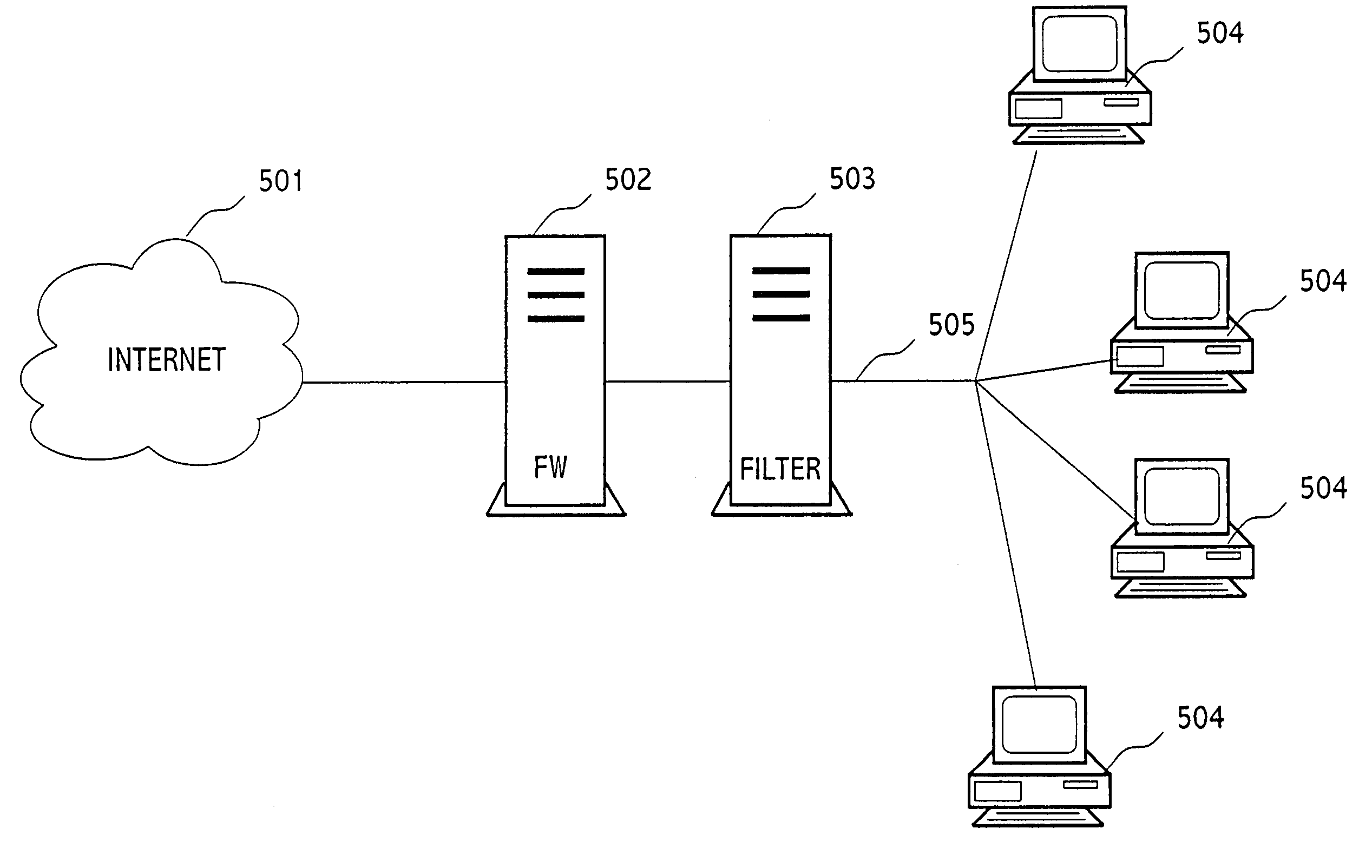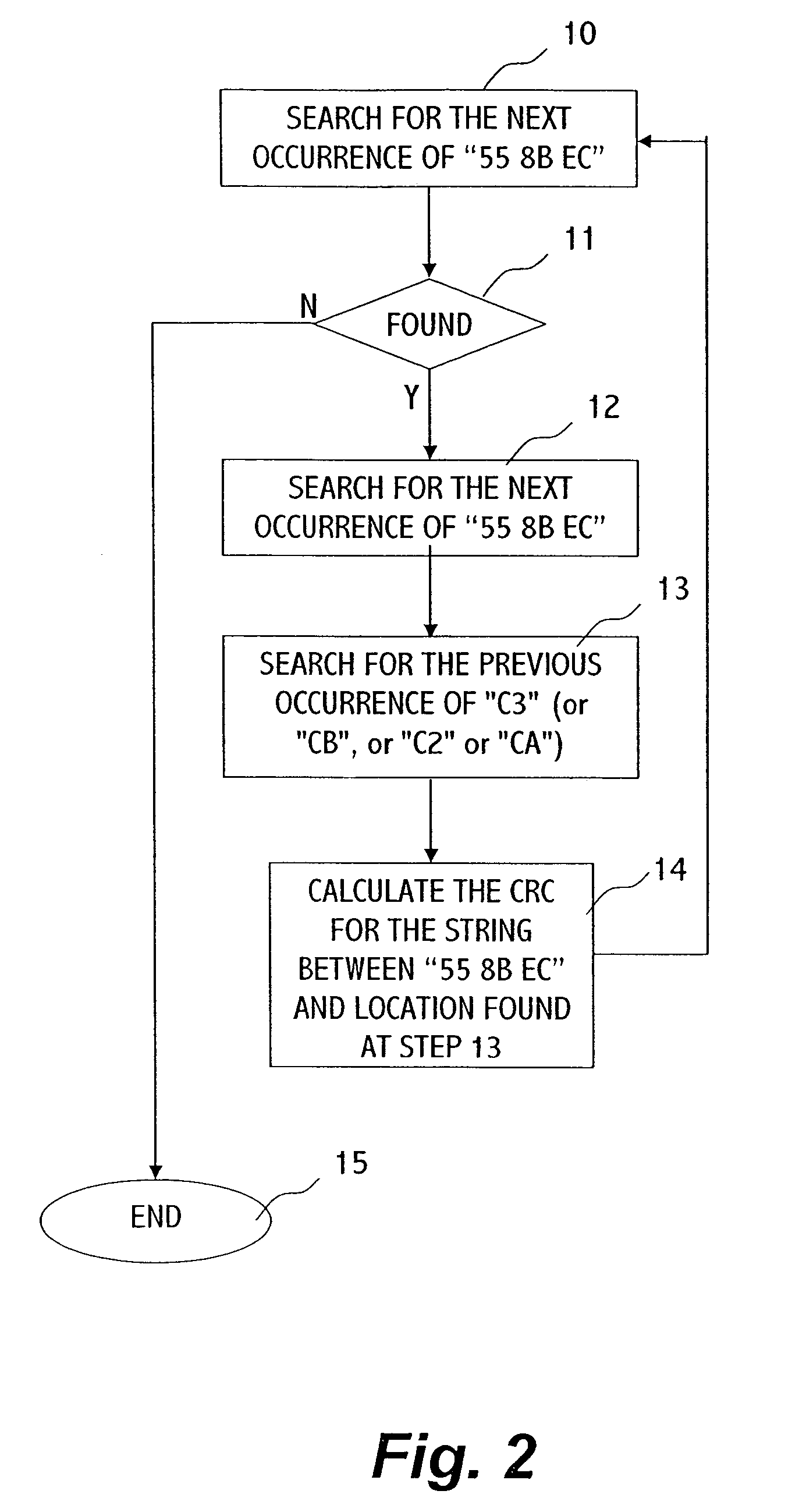Method and system for indicating an executable as trojan horse
a trojan horse and executable technology, applied in the field of malicious code detection, can solve the problems of large damage, not a simple procedure, and a great deal of effort to achieve meaningful
- Summary
- Abstract
- Description
- Claims
- Application Information
AI Technical Summary
Problems solved by technology
Method used
Image
Examples
Embodiment Construction
[0017]CRC, the acronym of Cyclic Redundancy Checking, is a method of testing data integrity. The mathematical model is made up of polynomials with binary coefficients. Typically it is used to test the integrity of data transferred through a communication channel. In a typical scheme, the CRC is computed to each data block transferred from a source to a destination, and the CRC bytes (i.e. the result of the CRC) are transferred with the corresponding data block. At the destination, the CRC is computed again from the received data block, and if the result corresponds to the received CRC bytes, then the data is considered to be transferred correctly.
[0018]There are a variety of standards for computing and handling CRC. The ITU-TS (CCITT) has a standard for a 16-bit polynomial. IBM's Synchronous Data Link Control and other protocols use CRC-16, another 16-bit polynomial. A 16-bit cyclic redundancy code detects especially typical communication errors, like single and double-bit errors. I...
PUM
 Login to View More
Login to View More Abstract
Description
Claims
Application Information
 Login to View More
Login to View More - R&D
- Intellectual Property
- Life Sciences
- Materials
- Tech Scout
- Unparalleled Data Quality
- Higher Quality Content
- 60% Fewer Hallucinations
Browse by: Latest US Patents, China's latest patents, Technical Efficacy Thesaurus, Application Domain, Technology Topic, Popular Technical Reports.
© 2025 PatSnap. All rights reserved.Legal|Privacy policy|Modern Slavery Act Transparency Statement|Sitemap|About US| Contact US: help@patsnap.com



